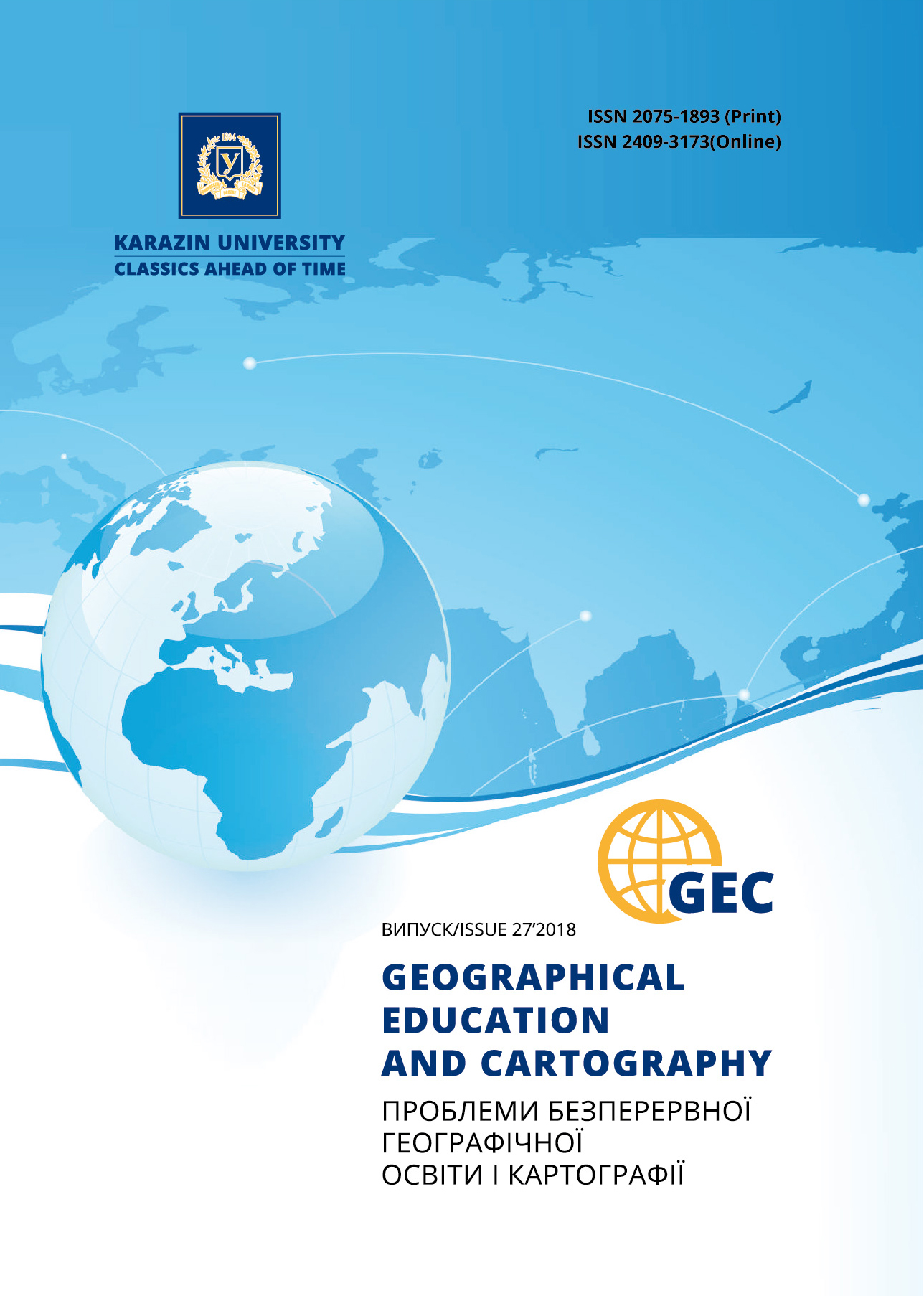The use of GIS to study accessibility of the urban environment (case study of Secondary Cities project)
Abstract
Issues of social protection of people with disabilities, the state of introduction of such people into society as well as the accessibility of the environment are considered by many researchers.
The purpose of the article is to reveal possibilities of using GIS in the study of urban environment accessibility on the case study of Secondary Cities project, implemented in Kharkiv.
The main material. One of the main problems that limits mobility of people with special needs is the lack of information on available community resources and services. The most popular way of solving this problem is to develop separate maps of accessibility and geographic information systems for vulnerable populations.
Secondary Cities project deals with the detailed study of the city infrastructure in terms of its accessibility to vulnerable population. At the preparatory stage, 2 series of workshops were conducted for the participants. Implementation of the project in Kharkiv can be divided into several stages: collection of geospatial data and their initial analysis; development of cartographic products, mobile applications and recommendations for improving accessibility of the urban environment. Data collection is currently ongoing, which is mainly performed with the help of Survey 123 mobile application.
According to the project goal, data have been collected for three general feature categories: «Mobility», «Community Resources and Services», «Public Safety». All the objects, by the level of accessibility, were divided into 3 classes: accessible, limited access, not accessible. In particular, among 419 public establishments of the city center 42% are accessible, 31% have limited accessibility and 27% are not accessible at all. It can be assumed that accessibility of facilities in remote areas of the city is even lower.
Conclusions. The most accessible way to receive operative information on the statics and dynamics of social infrastructure for vulnerable population is the use of geoinformation systems. Projects like Secondary Cities should be implemented in other settlements of Ukraine.
Downloads
References
Gajdaev, V.S., Semchugova, E.Ju. (2012). Logisticheskaja ocenka dostupnosti ob"ektov dlja malomobil'nyh grupp naselenija [Logistic estimation of availability of objects for people with disabilities]. Bulletin of PSU, 1 (24), 83-90.
Naberushkina, Je.K., Sorokina, N.V. (2012). Kartografirovanie dostupnosti gorodskoj sredy: aspekty social'nogo neravenstva [Mapping accessibility of the urban environment: aspects of social inequality]. The Journal of Social Policy Studies, 10 (1), 27-42.
Safronov, K.Je. (2014). Metodika ocenki urovnja dostupnosti ob"ektov dlja invalidov i malomobil'nyh grupp naselenija s ispol'zovaniem bal'noj sistemy [Method for assessing the level of availability of objects for invalids and people with limited mobility using point-based system]. Bulletin of SibARI, 3 (37), 122-126.
Safronov, K.Je. (2011). Novoe nauchnoe napravlenie – jekonomika bezbar'ernoj sredy [Economy of the free-barrier environment as a new scientific direction]. The Omsk Scientific Bulletin, 5, 79-82.
Semenov, S.P., Slavskij, V.V., Tashkin, A.O. (2016). Analiz informacionnyh resursov, napravlennyh na udovletvorenie informacionnyh potrebnostej ljudej s ogranichennymi vozmozhnostjami [Analysis of the information resources directed on satisfaction in information needs of physically disabled people]. Bulletin of NSU. Series: Informtion technologies, 1, 83-102.
Semenov, S.P., Slavskij, V.V., Tashkin, A.O. (2017). Razrabotka imitacionnoj modeli geoinformacionnoj sistemy dlja malomobil'nyh grupp naselenija [Development of a simulation model of a geoformation system for people with disabilities]. Bulletin of YuSU, 3 (46), 78-85.
Social`ny`j zaxy`st naselennya Ukrayiny`: staty`sty`chny`j zbirny`k (2016). [Social protection of the population of Ukraine: statistical compendium]. Ky`yiv: Derzhavna sluzhba staty`sty`ky` Ukrayiny`, 124.
Strategiya rozvy`tku mista Xarkova do 2020 roku [Kharkiv region development strategy to 2020]. Available at: http://strategy.kharkiv.ua/strategy_2016.pdf
Shestopalov, Ju.P. (2011). Bezbar'ernaja sreda dlja malomobil'nyh grazhdan kak ob"ekt social'nogo proektirovanija [Barrierfree environment for disable citizens as an object of social design]. Online Journal of Science, 1 (6), 1-4.
Secondary Cities. Available at: https://secondarycities.state.gov/





